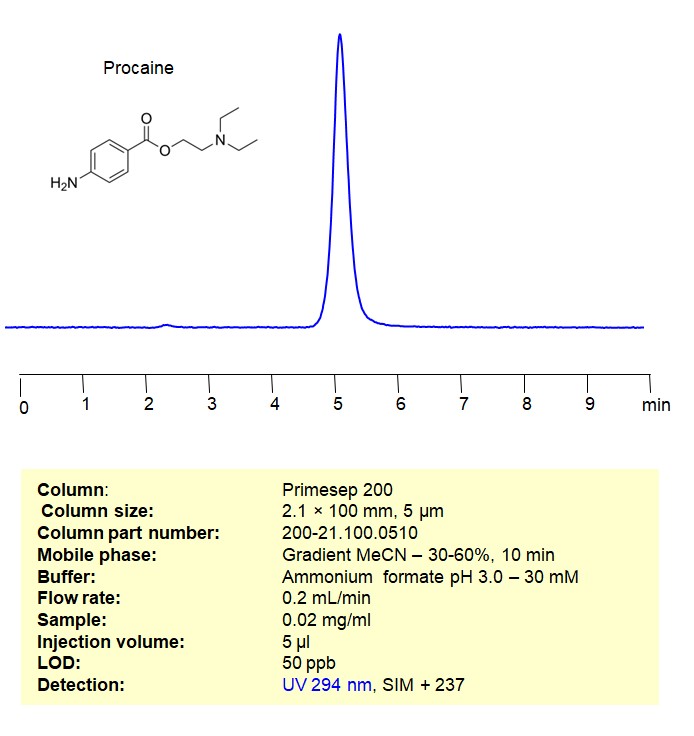High Performance Liquid Chromatography (HPLC) Method for Analysis of Procaine on Primesep 200 by SIELC Technologies
Separation type: Liquid Chromatography Mixed-mode SIELC Technologies

High Performance Liquid Chromatography (HPLC) Method for Analysis of Procaine
Procaine is a local anesthetic drug that belongs to the class of amino esters. It is often used to numb specific areas of the body during medical procedures or minor surgeries. Procaine works by blocking nerve signals in the body, leading to a temporary loss of sensation in the treated area.
Some common uses of procaine include dental procedures, minor skin surgeries, and as an ingredient in certain formulations for pain relief. It is often combined with other medications, such as benzyl alcohol, to enhance its stability and effectiveness.
Procaine can be retained and analyzed using a Primesep 200 mixed-mode stationary phase column. The analysis employs an isocratic method with a simple mobile phase comprising water, acetonitrile (MeCN), and ammonium formate as a buffer. This method allows for detection using UV at 294 nm
| Column | Primesep 200, 10 x 100 mm, 5 µm, 100 A, dual ended |
| Mobile Phase | Gradient MeCN 30-60%, 10 min |
| Buffer | AmFm pH 3.0 – 30 mM |
| Flow Rate | 0.2 ml/min |
| Detection | UV 294 nm, SIM + 237 |
| Samples | 0.02 mg/ml |
| Injection volume | 5 µl |
| LOD* | 200 ppb |
| Class of Compounds | Amide |
| Analyzing Compounds | Procaine |
Application Column
Primesep 200
Column Diameter: 10 mm
Column Length: 100 mm
Particle Size: 5 µm
Pore Size: 100 A
Column options: dual ended
UV Detection





